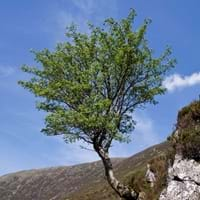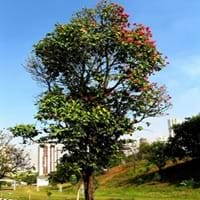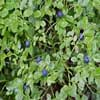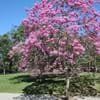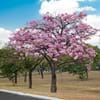Life Span
Perennial
Perennial
Origin
Asia, Europe, Northern Africa
Central America, South America
Types
Sorbus aucuparia fenenkiana, Sorbus aucuparia glabrata, Sorbus aucuparia praemorsa
not available
Number of Varieties
Not Available
Habitat
Temperate Regions
Dry areas
USDA Hardiness Zone
3-7
10-15
Sunset Zone
A1, A2, A3, 1a, 1b, 2a, 2b, 3a, 3b, 4, 5, 6, 7, 8, 9, 10, 14, 15, 16, 17
H1, H2
Habit
Oval or Rounded
Upright/Erect
Flower Color
White
White, Magenta, Rose, Light Green, Violet
Flower Color Modifier
Bicolor
Bicolor
Fruit Color
Orange, Yellow
Magenta, Rose, Violet
Leaf Color in Spring
Green
Green, Light Green, Dark Green
Leaf Color in Summer
Green
Green
Leaf Color in Fall
Dark Green
Green
Leaf Color in Winter
Dark Green
Green
Plant Season
Spring, Fall
Spring, Summer, Fall, Winter
Sunlight
Full Sun, Partial Sun
Full Sun, Partial Sun
Type of Soil
Clay, Loam, Sand
Loam
The pH of Soil
Acidic, Neutral
Acidic, Neutral
Soil Drainage
Average
Average
Bloom Time
Late Spring
Early Spring, Spring, Late Spring, Late Winter
Tolerances
Not Available
Drought
Where to Plant?
Ground
Ground
How to Plant?
Budding, Grafting, Stem Cutting
Seedlings, Stem Planting
Plant Maintenance
Medium
Medium
Watering Requirements
Do Not over Water, Water in the early morning hours
Do not water frequently
In Summer
Lots of watering
Ample Water
In Spring
Moderate
Ample Water
In Winter
Average Water
Average Water
Soil pH
Acidic, Neutral
Acidic, Neutral
Soil Type
Clay, Loam, Sand
Loam
Soil Drainage Capacity
Average
Average
Sun Exposure
Full Sun, Partial Sun
Full Sun, Partial Sun
Pruning
Remove dead or diseased plant parts, Trim each shoot back to the first set of leaves
Prune to control growth, Remove dead branches
Fertilizers
All-Purpose Liquid Fertilizer, Doesn't require fertilization when grown in rich soil
All-Purpose Liquid Fertilizer, fertilize in growing season, very little fertilizers at a time
Pests and Diseases
Aphids, blister mites, Canker, fireblight, sawflies, Silver leaf
Spider mites
Plant Tolerance
Not Available
Drought
Flowers
Yes
Insignificant
Flower Petal Number
Single
Single
Foliage Texture
Fine
Coarse
Foliage Sheen
Matte
Glossy
Allergy
Anxiety, Depression, High blood cholestrol, High blood pressure, Pain, Stress
Not Available
Aesthetic Uses
along a porch, deck or patio, Showy Purposes
Showy Purposes
Beauty Benefits
Not Available
Not Available
Environmental Uses
Air purification, Food for birds, Shadow Tree
Used to establish native woodland
Medicinal Uses
Diarrhea, Inflammation, Laxative, Urinary tract problems, Vitamin C
Diarrhea, Dysentry, Piles
Part of Plant Used
Bark, Fruits, Wood
Whole plant
Other Uses
Used for its medicinal properties, Used for woodware
Used as Ornamental plant, Used for its medicinal properties, Wood is used in construction
Used As Indoor Plant
No
No
Used As Outdoor Plant
Yes
Yes
Garden Design
Feature Plant, Mixed Border, Topiary / Bonsai / Espalier
Feature Plant, Shade Trees, Street Trees, Tropical
Botanical Name
Sorbus aucuparia
TRIPLARIS cumingiana
Common Name
Rowan, Mountain ash
Ant Tree, Long John
In Hindi
रोवाण पौधा
TRIPLARIS cumingiana
In German
Rowan Tree
TRIPLARIS cumingiana
In French
Rowan Tree
TRIPLARIS cumingiana
In Spanish
Rowan Tree
TRIPLARIS cumingiana
In Greek
Rowan Tree
TRIPLARIS cumingiana
In Portuguese
Árvore de Rowan
TRIPLARIS cumingiana
In Polish
Rowan Tree
TRIPLARIS cumingiana
In Latin
Rowan ligno
TRIPLARIS cumingiana
Phylum
Magnoliophyta
Magnoliophyta
Class
Magnoliopsida
Magnoliopsida
Order
Rosales
Caryophyllales
Family
Rosaceae
Polygonaceae
Clade
Angiosperms, Eudicots, Rosids
Not Available
Tribe
Not Available
Not Available
Subfamily
Not Available
Not Available
Number of Species
Not Available
Not Available
Importance of Rowan Tree and TRIPLARIS cumingiana
Want to have the most appropriate plant for your garden? You might want to know the importance of Rowan Tree and TRIPLARIS cumingiana. Basically, these two plants vary in many aspects. Compare Rowan Tree and TRIPLARIS cumingiana as they differ in many characteristics such as their life, care, benefits, facts, etc. Every gardener must at least have the slightest clue about the plants he wants to plant in his garden. Compare their benefits, which differ in many ways like facts and uses. The medicinal use of Rowan Tree is Diarrhea, Inflammation, Laxative, Urinary tract problems and Vitamin C whereas of TRIPLARIS cumingiana is Diarrhea, Dysentry and Piles. Rowan Tree has beauty benefits as follows: Not Available while TRIPLARIS cumingiana has beauty benefits as follows: Not Available.
Compare Facts of Rowan Tree vs TRIPLARIS cumingiana
How to choose the best garden plant for your garden depending upon its facts? Here garden plant comparison will help you to solve this query. Compare the facts of Rowan Tree vs TRIPLARIS cumingiana and know which one to choose. As garden plants have benefits and other uses, allergy is also a major drawback of plants for some people. Allergic reactions of Rowan Tree are Anxiety, Depression, High blood cholestrol, High blood pressure, Pain and Stress whereas of TRIPLARIS cumingiana have Not Available respectively. Having a fruit bearing plant in your garden can be a plus point of your garden. Rowan Tree has showy fruits and TRIPLARIS cumingiana has showy fruits. Also Rowan Tree is flowering and TRIPLARIS cumingiana is not flowering . You can compare Rowan Tree and TRIPLARIS cumingiana facts and facts of other plants too.
